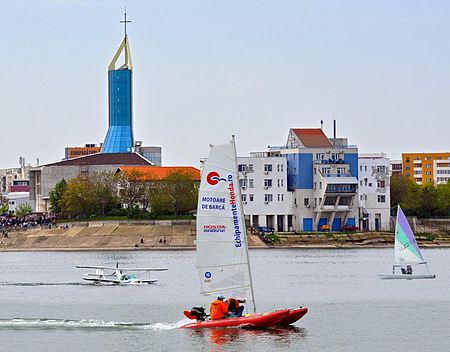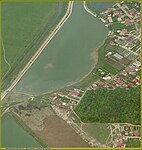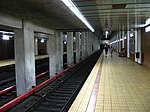Lacul Morii

Lacul Morii ("Mill Lake") is the largest lake in Chiajna, with an area of 246 ha (610 acres). The lake is approximately 6 km (3.7 mi) from the center of Bucharest (Piața Unirii) and is located between the Polytechnic University of Bucharest neighborhood to the east, the Crângași and Giulești districts to the north, the Militari district to the south and the village Roșu to the west. The lake is a reservoir, made in 1986 mainly to protect the city against floods. It is also a recreation area. Lacul Morii provides a constant flow to the Dâmboviţa river in the city. The lake was built by a dam 15 m (49 ft) high, with a central body of concrete, and earth dams extended lengthwise with a total length of 7 km (4.3 mi). The lake's volume is 14.7×106 m3 (1.92×107 cu yd), with a flood mitigation portion of 1.6×106 m3 (2.1×106 cu yd) beyond the normal retention. Effectively, to mitigate flooding, the lake's volume can be increased when floods are predicted. Making a lake near an urban area required decommissioning of existing uses, including demolition and decommissioning of a church.On the south of Lacul Morii there is a peninsula.
Excerpt from the Wikipedia article Lacul Morii (License: CC BY-SA 3.0, Authors, Images).Lacul Morii
Aleea Lacul Morii, Bucharest Militari
Geographical coordinates (GPS) Address Nearby Places Show on map
Geographical coordinates (GPS)
| Latitude | Longitude |
|---|---|
| N 44.455555555556 ° | E 26.025277777778 ° |
Address
Aleea Lacul Morii
Aleea Lacul Morii
061097 Bucharest, Militari
Romania
Open on Google Maps







